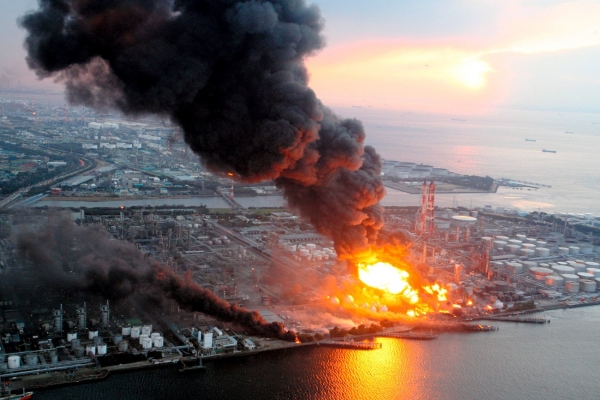Energy Innovation: Nuclear Power
- Kiran Kaur
- May 18, 2020
- 4 min read
Technology and innovation have been in a rapid, continuous series of growth and demand starting from the beginnings of the Industrial Revolution during the long 1800s to our highly modern 21st-century society. We all rely on the conveniences of energy to heat and cool our homes, schools, and businesses, power our kitchen appliances and technological gadgets, fuel our cars, buses, trains, and planes, and light up our spaces. The relevant ease we experience makes it easy to forget about where these energy sources come from and what alternatives are available to mediate the consequences of pollution and climate change. To me, a college student who studies environmental sciences, it is important to discuss the potential future energy sources that will power the following generations. Like so many others, I am currently socially distancing during this global pandemic and am heavily reliant on technology to communicate with my peers and coworkers, so the question of energy becomes even more prevalent in my thoughts. I am constantly either on my phone or my laptop to both stay connected with friends and conduct research for these very blog posts! I would like to look at the past history of nuclear power and its rising possibility in our time.
Nuclear Energy’s Past
I want to take a step back to look at past human experience with nuclear power plants because it gives insight on the opinions and feelings on the issue. I think it is important to how we move forward and whether we trust nuclear power enough to invest resources and time into related projects. In 1979, in central Pennsylvania, the water cooling pumps of a nuclear power reactor failed, leading to its overheating and the release of radiation and iron core. This event, known as Three Mile Island, forced local people to evacuate for days on end, leaving them most vulnerable by this energy source. Another nuclear accident occurred under the control of the USSR in 1986, where a power plant exploded during testing, spewing radioactive material in all directions in Europe. Cases of cancer in children increased by 90%, over 19,000 families are receiving government assistance owing to loss of a breadwinner, 5,000 cancer deaths, and even genetic damage are all consequences resulting from the Chernobyl incident, and the cleanup and harm is ongoing till today. In 2011, one of the most recent occurrences of nuclear power gone wrong, an earthquake triggered a 14m high tsunami in Fukushima shutting down all six working reactors, causing generators, batteries, and power all to fail. The reactors were flooded with seawater which was then released into the ocean, contaminating marine life ecosystems. (1)
Disparities in Nuclear Innovation
I can only imagine the psychological toll of those affected by these incidents, as being unable to trust nuclear energy again as it displaced them from what they call home. In fact, the inequalities in the socio-political realm become very evident to me in these cases. There are those top executives who are found NOT responsible for the deaths and destructions of the lives of many average citizens. Those working from the top typically leave clean up to the lowest-paid contract workers that are getting few health and pension benefits, great exposure of radiation, and the fewest protections. The companies running the power plants only worry for these people after they have been overexposed to radiation, throwing them away with absolutely no source of income. These events of slow violence makes environmental crises and those vulnerable more visible to me and those following these cases. I believe it is clear that the discrepancies that nuclear energy has brought in the past makes it uneasy to grow in the process; if I personally faced these tragedies in my lifestyle, I would completely condemn the idea of nuclear power. I wonder how we can make people comfortable and trustworthy of an industry that has caused them tremendous economic, sociological, and personal harm.
The Future for Nuclear Energy
With climate change on the rise, and wind and solar power unable to meet the cut as complete alternatives of fuel, I want to consider the option of nuclear energy as a possibility, as long as there are greater forms of responsibility and safety. If we want to use nuclear power plants to fuel our economy, I am adamant that past accidents and potential future mistakes are not normalized by the actions of human error. It should be understood as part of the problem, rather than being deemed as inherent, built-in, normal and systemic. We should look at who is gaining by building these institutions in the first place, giving insight behind the political and economical interests on the construction of these power plants. I think that in the past many of the laborers' schedules were time-consuming, production quotas were demanding, budgets remained inefficient, rules were disregarded, and warnings were ignored which made such accidents more probable to happen. Moving forward, I question whether I can be an environmentalist and somehow still support the future of nuclear energy. Looking further into this, I discovered a documentary discussing this possibility called Pandora’s Promise opening my eyes to the idea of being pro-nuclear. My own opinion on this topic has yet to be set in stone as it is difficult to look beyond the past devastations, but I like to have an open mind on nuclear energy to solve our current environmental catastrophe. Watch the film and see how you feel about it!
“ If you care about your kids, go nuclear.” - Pandora's Promise
Free version of the Documentary
(contains Filipino subtitles but the film is in English)
References
Jen Martin, Environmental Studies 3 Course, Week 6 Lectures, University of California, Santa Barbara
https://time.com/5255663/chernobyl-disaster-book-anniversary/
https://thebulletin.org/2019/11/an-update-from-fukushima-and-the-challenges-that-remain-there/







Comments